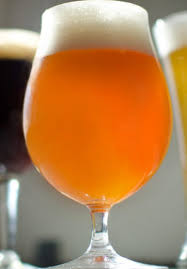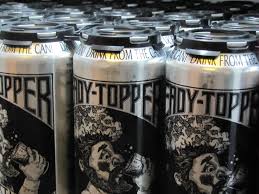
Last week I did my regular CBC Radioactive column on the craze that is hazy beer. As my friends at CBC are still not posting my segments online (an ongoing frustration for me) I thought I would expand a bit on my thoughts in that column.
Most readers of this site know that hazy beer has quickly become a popular thing in the beer world. Consumers are embracing the murky and I see breweries everywhere rushing to put out a hazy ale of their own to satisfy this seemingly insatiable demand.
For the uninitiated, hazy beer (usually IPA or Pale Ale, but increasingly other styles as well) is beer that is made to intentionally maintain a cloudy appearance. Most of the time the beer is also associated with a big, citrus fruit hop flavour and aroma – due in part to its origins in New England-style IPA. The haze comes from a combination of high doses of late and dry hops, a high protein grain bill (often including oats or wheat), yeast strain and a lack of effort to fine the beer.
This new type of cloudy beer is not to be confused with German and Belgian wheat ales, which have for centuries been hazy but for a different reason (yeast and effects of the wheat). the haze craze is not about extolling the virtues of these historic styles, but of bowing at the altar of New World beer experimentation and boundary pushing.
That is not a bad thing. I was an early fan of New England IPAs when someone brought me a can of Heady Topper a few years ago (read my review here). And then Apex Predator (at the time it was just a beer, not an entire brewery) was an early Alberta-made example that tasted like alcoholic Five Alive to me.
Today there are dozens of excellent examples of hazy pale ales and IPAs. I went through a half dozen or so to decide which to try on air last week (I ended up choosing Annex Ale Project’s Force Majeure). So what’s my problem? This.
Lately for every refreshing, fruity New England-style ale I find, there are two that are murky, muddy puddles of mess. Too often I am finding attempts at hazy beer that lack a bright citrus fruit character, or have a rough astringency. Often they have a silty roughness that I dislike intensely. Some leave a noted layer of sludge at the bottom of the glass (a no-no in my books). Finally, I find some breweries think that if a little haze is good A LOT of haze must be better and are churning out beer that look like yeast slurry. (And, no, I am not going to name the offenders. That has never been my style.)
I am not exaggerating. Making hazy beer takes time, finesse and a deft hand. Hazy ales are supposed to be light, clean and refreshing along with haze and fruitiness. They are also very delicate and are unlikely to withstand four months sitting in Connect Logistics or on a liquor store shelf – a reality lost on many producers.

What I find – and what I commented on CBC last week – is that the problem arises when a brewery is aiming to make a “hazy beer” without due attention to what that haze represents. Said another way, the problem with crazes is that everyone wants to be a part of it. And when you are rushing to meet the new, cool thing you lose sight of what it is you are supposed to be making.
A few years ago, beer consumers and breweries worked themselves into a frenzy over IPAs of the West Coast variety. Breweries pushed and pushed the bitterness and hop character ever higher, making these puckering hop bombs. Drinking IPAs started to become not enjoyable because an atomic blast was attacking your palate every sip.
That craze has faded (thank goodness), but it serves as a useful lesson. At the height of the hop bomb era, the sole focus was on hops – people had lost sight of what an IPA experience was supposed to be. I believe the same thing is happening with hazy beer. I fear for too many (drinkers and producers alike) it has become exclusively about the haze and we are losing sight of the context behind the murkiness. Not enough attention is being paid to crafting a clean, refreshing citrusy ale.
When I first got into beer, haze was a sign of a poorly crafted beer (except for the aforementioned wheat ales). I am glad those days are gone and that we can appreciate the flavours that a little haze can bring. But today I fear too many see haze as a sign of excellence. It is neither.
Try to see through the haze to the beer itself. What is it trying to accomplish? What are the flavours in the beer? Does the haze accent those flavours, making it a well-rounded experience? Or is haze all the beer is about?
I will drink a well made New England-style beer any day, but if you tell me it is a “hazy beer” I will likely pass, thanks.


July 11, 2019 at 12:05 PM
Suggested reading:
The New IPA: Scientific Guide to Hop Aroma and Flavor, Scott Janish